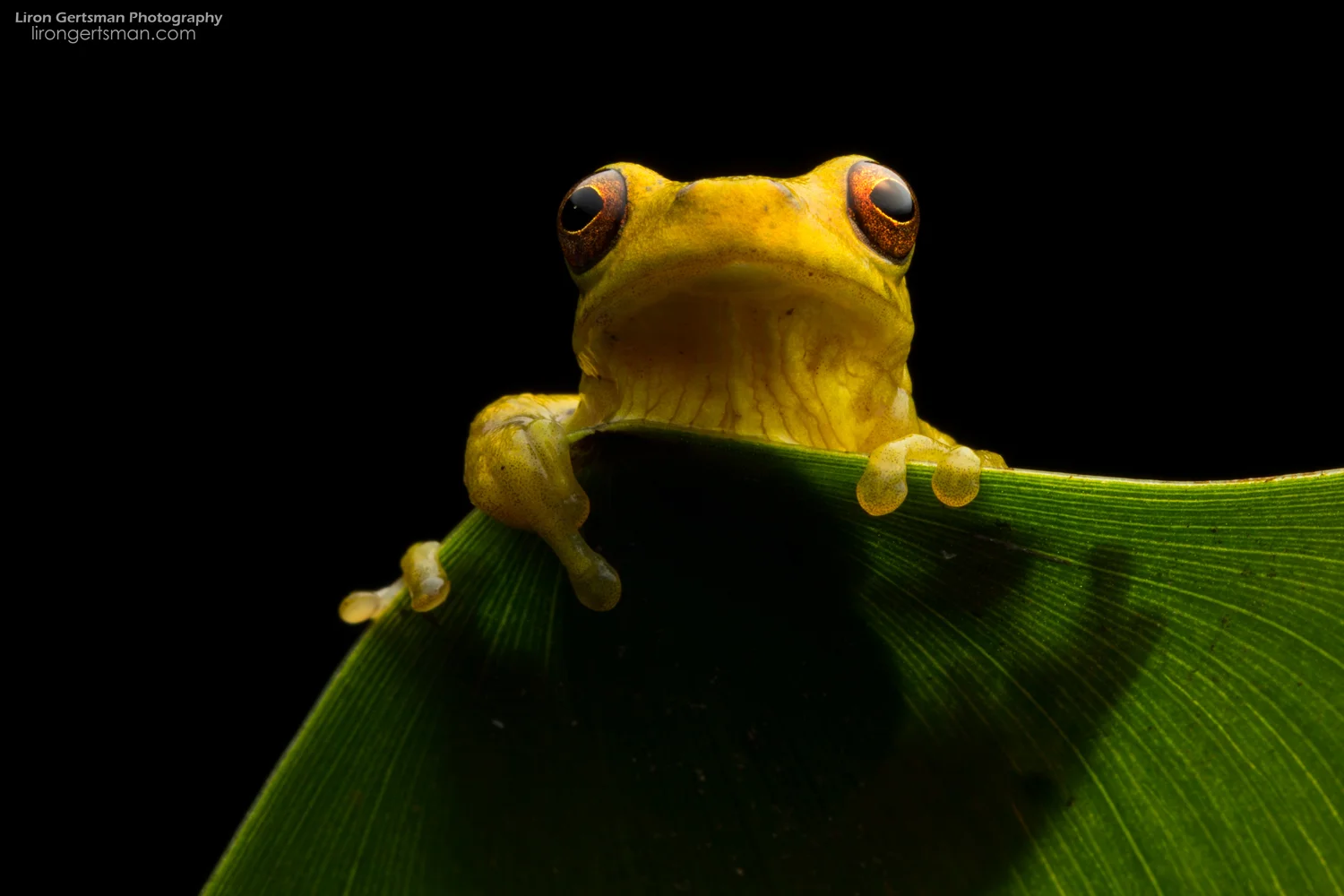At the end of 2016, I was contacted by my friend, mentor and professional photographer Karine Aigner about a Summer photography trip she was looking to organize. A few months later, it was confirmed: I would be heading to Ecuador for two weeks for a youth conservation photography workshop, led by Karine and Lucas Bustamente, both ILCP fellows, with help from Jorge, Diana and the rest of the Tropical Herping team!
Participating in the workshop were myself and five other young photographers: Anna, Carolina, Emma, Sam and Zach. I flew into Ecuador on a cool July evening, excited for the two weeks ahead!
Over the trip, I learned what conservation photography truly was. As a conservation photographer, you have a duty to photograph the world and share the stories that you see with others. The world needs to see environmental photographs and stories if conservation is to be done. A conservation photographer must includes the entire picture in the their stories, not just wildlife portraits and scenics, but also the human behaviors and interactions that may have positive or negative effects on the world.
The photo story that I worked on during the trip was about the education, research and conservation of Herps in Ecuador:
"Beautiful in a Slight Way"
Hover your cursor over the images to read the corresponding caption.

Welcome to Ecuador! This is Quito, the capital city of this biodiverse country. Quito has a population of two million people, but is surrounded by fast cloud forest.

Located close to Quito, is the small town of Mindo. Mindo is located in pristine and beautiful cloud forest. This incredible area is a hotspot for herpetologists: people who study reptiles and amphibians.

Researchers including Alejandro Arteaga from the Tropical Herping team are studying the herps found in this area. The team has done much exploration and research, and their work has led to the discovery of multiple species new to science.

The beautiful Executioner Clown Frog is one of the many frog species that the team has observed and studied in the Mindo area.

Some animals are temporarily brought to the lab, including this Equatorial Anole. In the lab, animals are closely studied and photographed before being returned to the wild.

In the case of this anole, only basic notes and measurements were needed. This important data has helped the Tropical Herping team create the guide to herps of Mindo, a book that is for sale in many stores and lodges in the area. Tropical Herping's current mission is to document all the herps in Ecuador.

The Pinocchio Anole as believed to be extinct after only a handful of sightings around its original discovery in the 1970s. The animal was rediscovered in Mindo in 2005, and the Tropcial Herping team has since found and documented many more individuals in the area. This is a female photographed on a white background in the lab.

Thanks to the Tropical Herping team, the story of the Pinocchio Anole has become known. Education around herps and conservation has become more common, evident by this recent painting of the Pinocchio Anole on a school in Mindo.

On both sides of the Andes, education and conservation is important. Flying east to the Amazon, we meet the Kichwa Añangu people.

Herps are ever present in the culture and culture-related tourism in the Kichwa Añangu communities. The Kichwa Añangu people have changed their historical traditions of hunting animals to preserving them, and have opened two lodges in Ecuador's Yasuni National Park. These lodges are critical for education and conservation.

Some of the activities at the lodges include night walks, where one can see a variety of animals, including herps such as this Smokey Jungle Frog.

The same researchers from Mindo have also done work documenting and studying herps in the Ecuadorian Amazon, such as this Rusty Whipsnake.

This Lyre Anole is another species found in Yasuni National Park. This incredible lizard is colored like a dead leaf, and is one of hundreds of herp species found in this highly biodiverse area.

Tours from the lodges of the Kichwa Añangu people may encounter the iconic Black Caiman. Sightings of animals like this help educate tourists about the wildlife of the region.

In both the Mindo Cloudforest and in the Ecuadorian Amazon, herps are researched and play an important role in the education of thousands of visitors and locals. Education is perhaps the most important aspect of conservation.















Scattered throughout the Amazon basin are hundreds of clay licks, where parrots, parakeets and macaws come to neutralize the acidic fruits that they eat. To get this photo, I waited for hours three days in a row in a blind in the hot and humid rainforest of Yasuni National Park in Ecuador. Each day at the site, hundreds of Cobalt-winged Parakeets would fly into the canopy, and spend hours slowly descending the tree branches towards the mineral-rich water and clay below. They would nervously descend one branch at a time, coming closer and closer towards the ground. However, for two days, something kept scaring the birds away before they made it all the way to the earth. There was likely a snake or a hawk in the area that we couldn’t see. Finally, on the third day, hours of waiting paid off! Over four-hundred Cobalt-winged Parakeets rained on the forest floor. I used a slower shutter speed to create a more artistic effect. Seeing them and hearing the deafening roar of parakeet chatter was an experience I don’t think I’ll ever forget.
Here is a random selection of some more of my favorite images from this trip. Enjoy!
Click on a thumbnail to enlarge
Here are a few more photos, showcasing the people, culture and city life that we witnessed.







































































